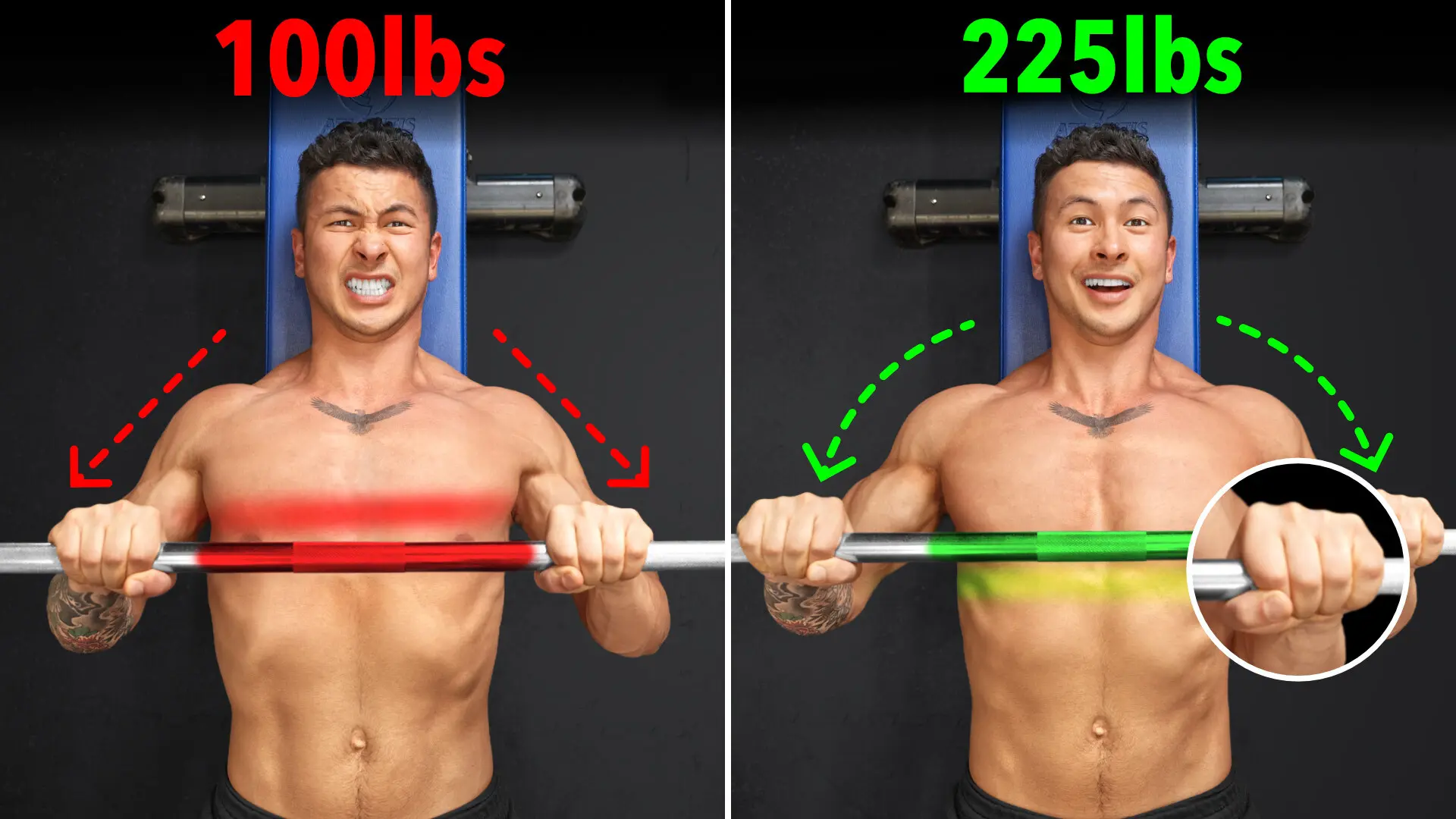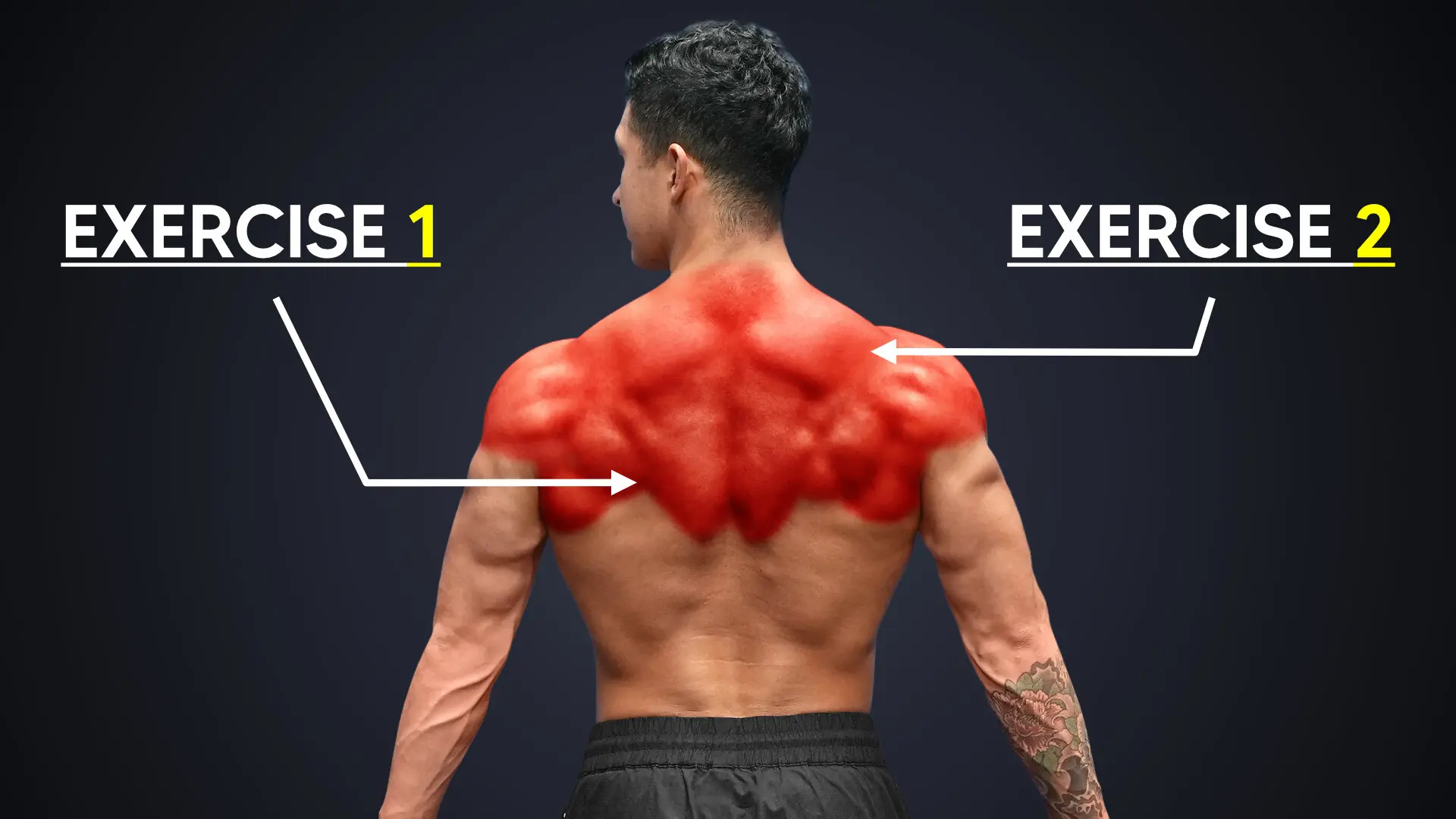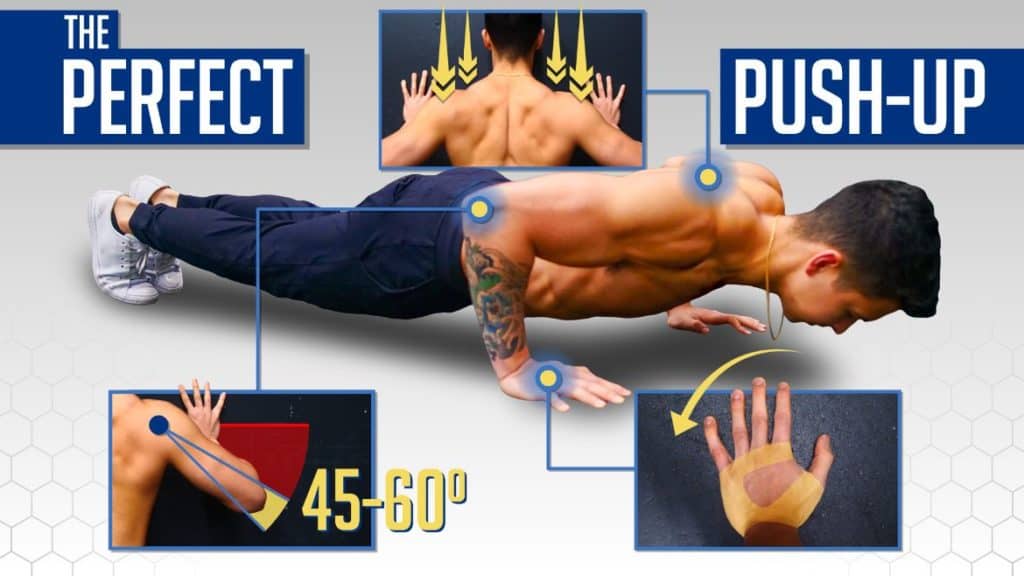
The Perfect Push Up Form To Build Muscle (AVOID THESE MISTAKES!)
Most people just can't seem to the proper push up form right. Are you one of them? Find out in this article. Here, I cover the most common push up form mistakes so you avoid injuries. And experience the fastest growth.
The push up is the most primitive muscle-building movements we possess. Unlike some other body movements such as dips or pull-ups, you need absolutely nothing to perform this movement. It can be used for many purposes. Strength development, muscle growth, or even as an effective warm-up tool. And in fact, it’s been shown in the literature to provide chest and triceps size and strength gains that are comparable to that of the bench press. Of course, that's at least for beginners. As simple as it may seem though, many people trip up on the push up form!
Just because it’s a simple exercise, doesn’t necessarily mean it’s simply done. There is a high amount of muscle mass and joints involved in this exercise. And that means there is a lot that can go wrong. Which, as you’ll see, is not only detrimental for growth but is also problematic from an injury and pain standpoint. We tend to do push ups with a lot of volume. So, the resulting wear and tear from an improper push up form can accumulate very quickly.
To help you out, I’ll share 2 crucial things in this article:
- The most common and problematic push-up mistakes
- How to fix them right away
... So that you can see faster growth while avoiding potential injury down the road.
Of course, you shouldn’t only learn - and fix - training mistakes related specifically to your push-ups. Every aspect of your training will benefit if you take the time to understand and correct the common lifting mistakes for each muscle group. And that's precisely what I cover in every single one of my programs - so you experience the quickest gains possible. Interested?
Click the button below to take my analysis quiz to discover the best program for you:
↓
Mistake #1: Elbow Angle
The most common mistake people make with their push ups is flaring their elbows out. This mistake is a common result of using a hand position that’s too wide. And why do people do this? Well, it's that they believe this will better target and grow the chest. But here's the truth. Doing so actually does the opposite - while putting our shoulders at a greater risk for injury.
Because whenever we do any pressing motion like a push up, we want our elbow angle to line up with our chest fibers. Doing so will best activate them. Here's what happens when we use a wide grip instead:
- The range of motion is shortened
- Our body is forced to flare the elbows out to the sides whenever we get to the bottom position
As a result, the elbow angle and tension is now best lined up with the front delts, which is what we want to avoid. We want it all lined up with the chest instead.
In fact, multiple studies have weighed in on the perennial question: 'Does the proper pushup form involve elbows in or out?' These studies compared a wider grip with the elbows flared to a narrower grip with the elbows tucked. The findings? Researchers have not only significantly less chest activation with the wider grip but also less activation of the triceps and less strength and power improvements. This is likely due to the reduced range of motion.
What Does Good Push Up Form Look Like In Terms Of Your Grip And Elbows?
So, you want to use a grip that’s roughly just outside shoulder-width or narrower. And then, when you execute your push-ups, don’t forget to tuck your elbows in towards your body rather than flaring them out. One study examined the effect of elbow placement during the pushup.
It found that at degrees higher than 60 degrees out, the shoulder is placed in a compromised position that can lead to shoulder impingement. So, keeping them tucked to below a 60-degree angle, preferably right around 45 degrees is recommended.
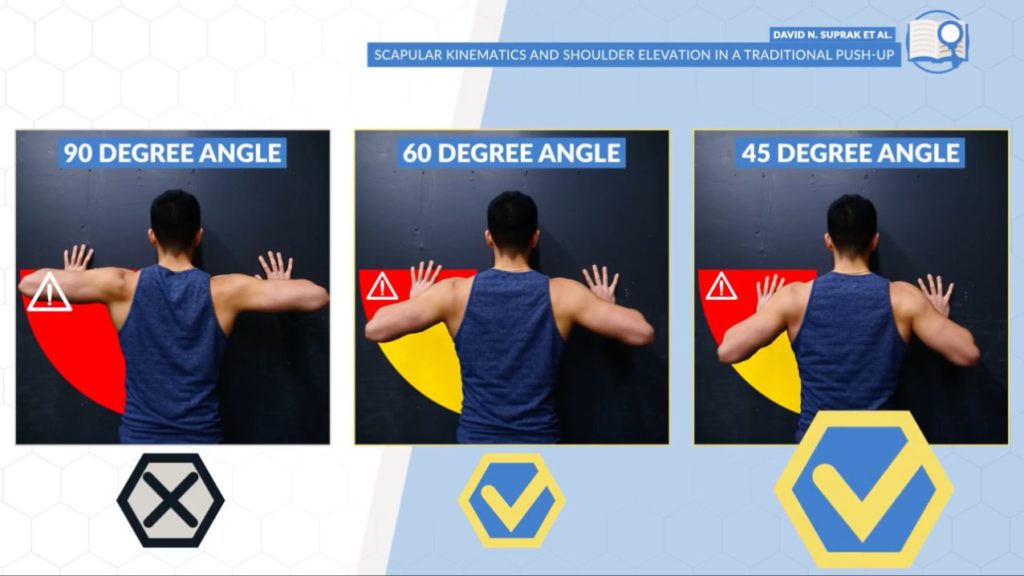
What you’ll find when implementing this to your push-ups is that your body will now actually move forward and back. This is similar to the correct bar path of your bench press, which is a good thing. You'll know you're doing the proper, correct push up form when you stop moving vertically up and down.
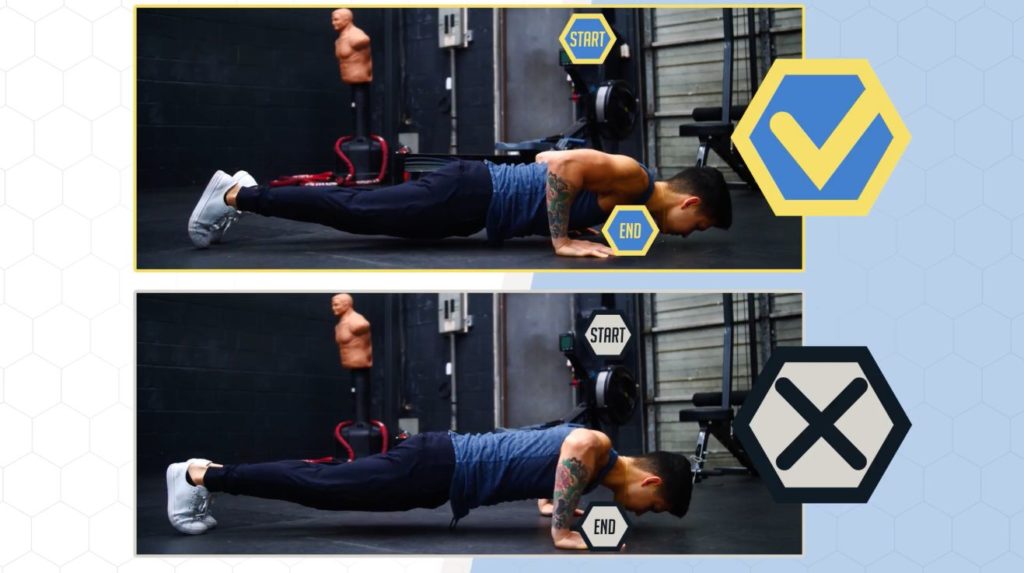
Making this simple tweak in your elbow positioning achieves 2 things:
- Place our elbows in the optimal position for chest activation
- Enables a much safer position for your shoulder to be in
Mistake #2: Hand Orientation
Next, we want to be mindful of our hand orientation. The first problem we see is when we people have their hands turned in slightly. This creates 3 problems:
- Encourages the flaring of the elbows, which, as I previously mentioned, is something we want to avoid
- Places our shoulders in an internally rotated position. This, in turn, puts us at a greater risk for shoulder impingement.
- Adds shear stress on the elbows
So instead, for the best push up form, keep your hands in a neutral position. So not pointed in, but also not pointed out.
It's similar to how you would set your feet when squatting. You should actively screw your hands into the ground to promote the external rotation of your shoulders before your push-up. If your hands are already pointed out quite a bit, then it prevents us from being able to do this.
Then, you’ll want to promote this position as you go into your push-up. You can do so by thinking about distributing the weight in your hands more externally rather than internally, by again, thinking about screwing your hands outwards.
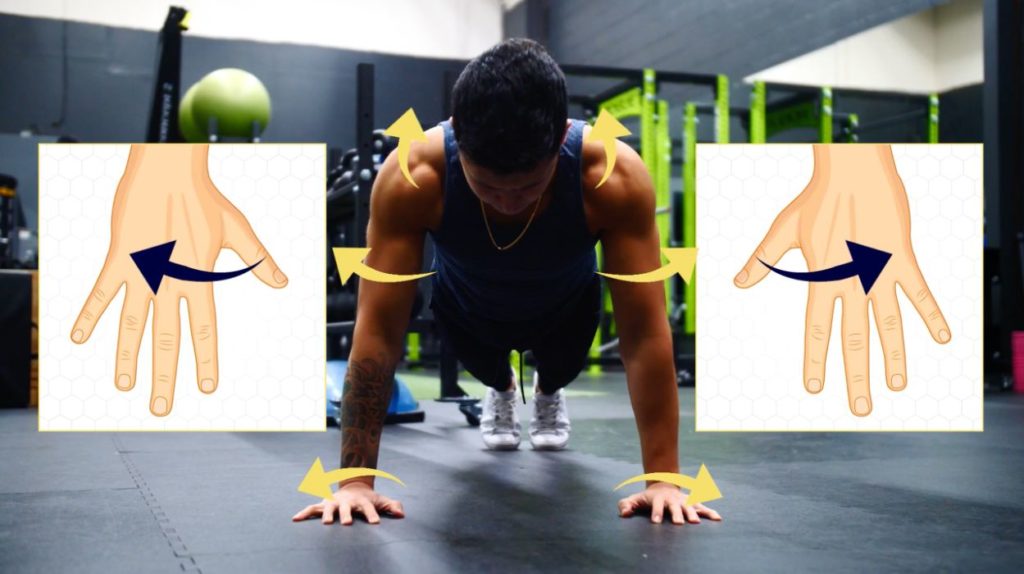
Apply this tweak. You’ll immediately notice a big difference in the stability and comfort of your shoulders as you perform each rep.
Mistake #3: Not Matching Push-Up Form To Target Muscle
Most people are unaware that you can actually emphasize specific muscles more than others. And you can do that by simply making very simple adjustments to your push up form. Which is beneficial when you want to specifically focus on working a certain muscle group. For example, during a chest focused workout or arms focused workout.
To do this, we mainly want to pay attention to what our elbows and shoulders are doing during the movement.
Push Up Form For Chest
For instance, if we wanted to make the pushup for the pecs, then we want to limit the amount of flexion our elbow experiences. We can do this by moving our hands back a touch during the set-up. And then keeping our elbow stacked right on top of our wrist as we execute the push-up. What this will do is place more tension on the chest, and less tension on the triceps. This is exactly what a 2005 paper found when comparing several different push-up variations.
Military Push Up Form For Triceps
Alternatively, if we wanted to make the push-up more triceps focused, then we want to maximize the amount of flexion our elbow experiences. This can be done by tucking the elbows in and dropping them down and back as far away from your hands as you’re capable of comfortably doing during the push-up. This is as opposed to keeping them stacked over your wrist like in the chest-focused variation. This subtle tweak will take the triceps through a greater range of motion. And, hence, place more tension on them rather than on other muscles like the chest and shoulders.
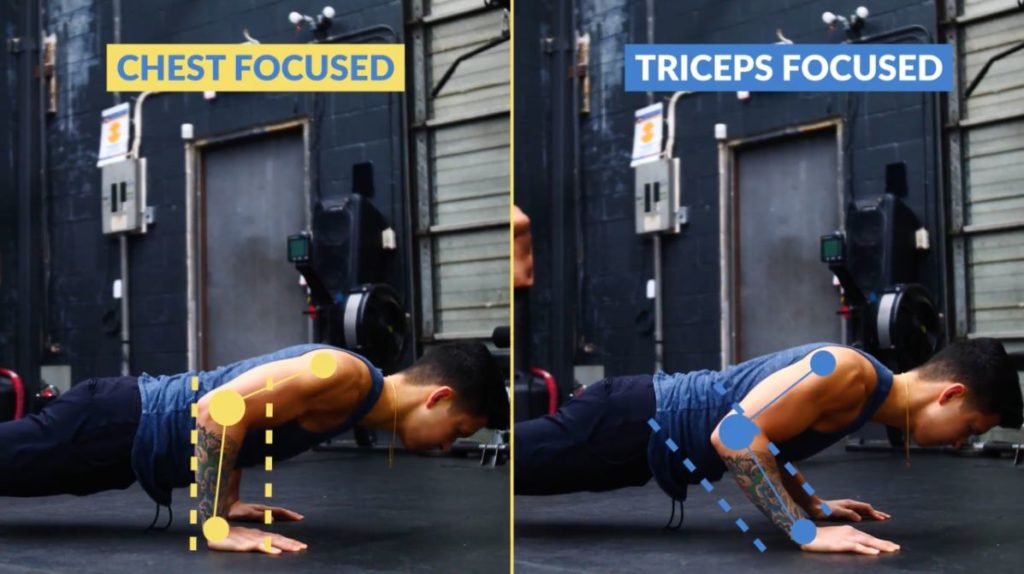
Knowing how to tweak/replace exercises that suit your training goals is pretty complicated. Thankfully, though, the team here at BWS has the necessary expertise to do just that. Our 3-on-1 coaching program takes the guesswork out of training, nutrition, and even mobility work - so you can focus on what matters: making gains. If you're interested:
Click the button below to find out more about the 3-on-1 coaching program:
↓
How To Do Push Ups That Emphasize The Delts
And lastly, if we wanted to emphasize the shoulders a little more, then we would want to elevate our feet up onto a high enough platform. Or perform a pike push-up. Similar to the effect of adjusting the incline of a bench further and further up, the added shoulder flexion in these variations will shift more and more of the tension to the shoulders rather than the chest or triceps.
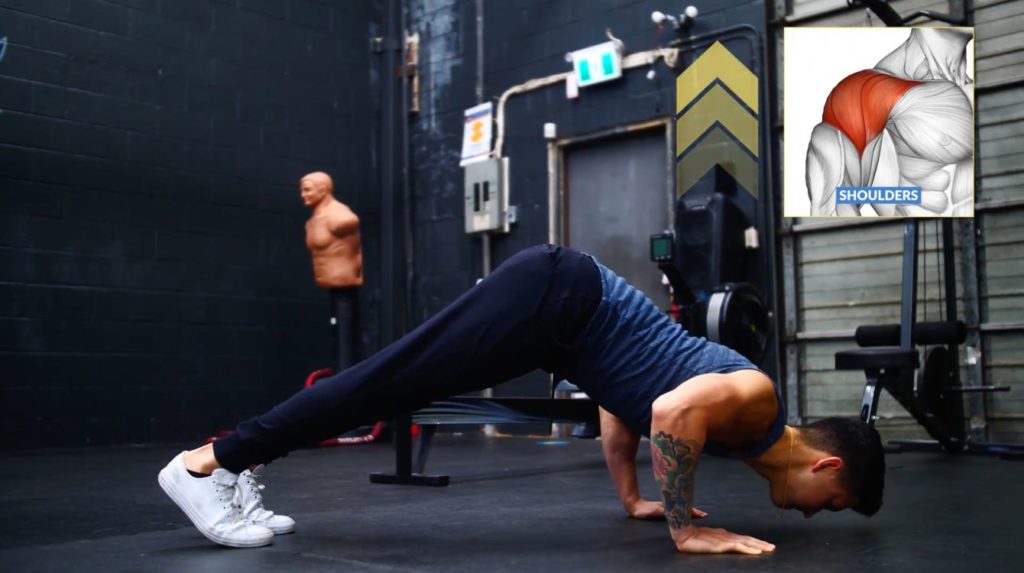
So, play around with these variations. And place them in your routines based on what muscle you want to emphasize the most.
Mistake #4: Shrugging
The next mistake is something I’ve talked about frequently for other exercises. But is just as commonly seen with push-ups: shrugging the shoulders. Even if you have the proper hand placement, once you start fatiguing and grinding out reps it’s easy to let the shoulders shrug up towards the ears. This does 2 things:
- Shifts tension away from the chest and onto the traps
- Causes you to lose a ton of stability and pressing strength
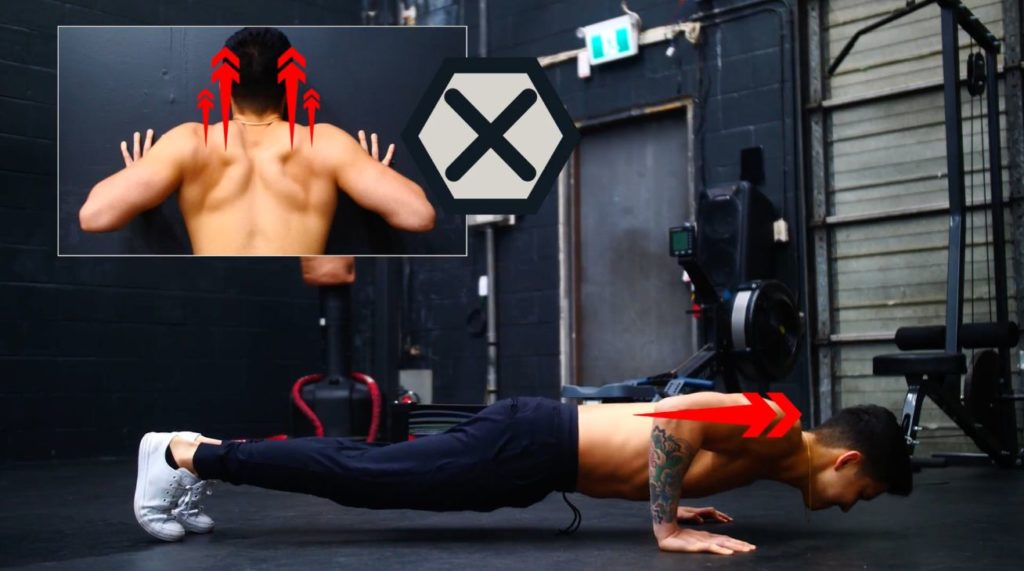
So instead, using your lats, actively pull your shoulders down and away from your ears and into a stable and locked position. You’ll want to maintain this form as you perform each rep.
This simple change will add a ton of much-needed stability to your push-up, improve your pushing strength, and ensure that most of the tension goes towards the target muscle rather than the traps.
Mistake #5: Speed
Lastly, is speed. For most of you with a good amount of training experience, push-ups become fairly easy when done only using bodyweight. And as a result, when you do perform them, you probably tend to knock out a bunch of push-ups as fast as possible. Or with a relatively fast tempo. Now if you’re doing this for a fitness test, then go for it. However, if you’re regularly using push-ups as part of your training program to build muscle, then you aren’t going to benefit as much for a couple of reasons.
Illustrating this is a study that examined different tempos during the push-up. They found greater chest activation and significantly greater triceps and rear delt activation as the speed of the push-ups slowed down from 1.5 seconds per push-up, to 2 seconds per push-up, to 2.5 seconds per push-up which provided the greatest activation.
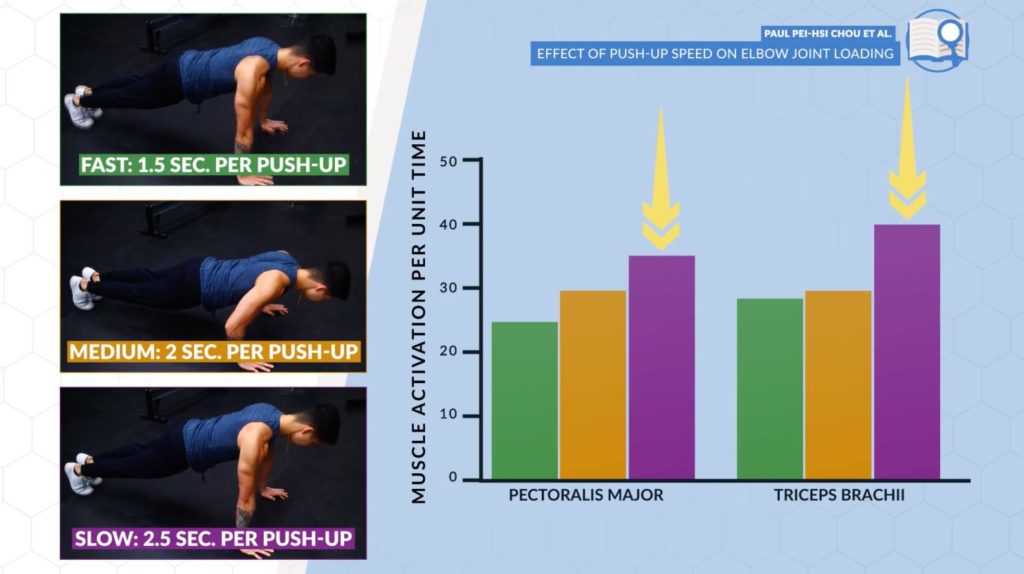
What’s even more of a concern though is that doing push-ups with the fast tempo resulted in 135% greater shear force and 163% greater torque on the elbow joints. This is a major concern if you’re doing push-ups quite frequently. That's because over time, this can cause excessive stress and pain to the elbow joint.
So, if push-ups have gotten pretty easy for you? Instead of just trying to bang out more push-ups as fast as you can, slow it down. Take at least 2.5 seconds to perform each push-up. You can even slow it down further to 5 or 6 seconds per push-up if you need some added difficulty. Doing so will enable you to stress and grow your target muscles to a greater degree as you get stronger over time. While placing less unwanted stress on your joints.
The Perfect Push Up Form: Takeaway
So, hopefully, you were able to see that there’s a lot more that goes into even the simplest of exercises, like the push-up. Yet if you want to see the best results while minimizing your risk of injury, then you need to apply this same level of detail to each and every one of your exercises in your routine.
And for a step-by-step program that does all of this for you, by showing you not only the workouts to do every week, but then how to execute those workouts and exercises to maximize your results, then:
Click the button below to take my analysis quiz to discover the best program for you:
↓
PS: it doesn’t matter whether you have full access to a gym, just a set of dumbbells, or just your bodyweight - we have science-based programs that will work for you regardless of what equipment you may or may not have. Anyways that’s it for today guys! I hope you all enjoyed it! Don’t forget to give me a follow and connect with me on Instagram, Facebook, and Youtube as well, in order to stay up to date with my content.


